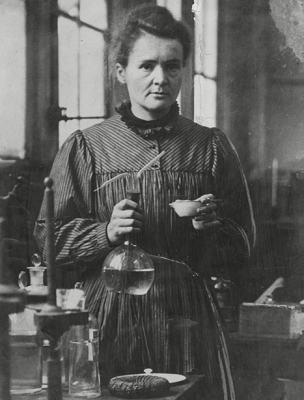
Maria Salomea Sklodowski Curie was the first woman to win a Nobel Prize and the first person and only woman to win the Nobel Prize twice.
She was born on November 7, 1867 in Warsaw, Poland to teachers – Bronislawa and Wladyslaw Sklodowski. Both her parents acted as catalysts in Maria’s life, encouraging her to pursue her higher education.
Maria moved to France and changed her name to Marie. She enrolled as a student at the Sorbonne University, Paris in 1891. Here she met and married Pierre Curie, who encouraged her to do research. With Pierre as her advisor, Maria spent several years purifying uranium ore, often under deplorable laboratory conditions.
She discovered two new elements which were named radium after ‘radiation’ and polonium after Poland, Marie’s home country. In 1903, the Curies and Henri Becquerel received the Nobel Prize in physics for their combined research and discoveries on radioactivity.
Marie’s daughter Irene Joliot-Curie and her husband, Frederic Joliot, won the Nobel Prize in Chemistry in 1935, for their work on the synthesis of new radioactive elements.
Marie Curie died in 1934 of aplastic anaemia (bone marrow damage caused by exposure to radiation).
Just like some radioactive substances can cause a glow around them, so also Madame Curie was able to illuminate the paths of science by her work. She is one of the most celebrated and respected scientists in history and is a remarkable role model indeed.
Picture Credit : Google




